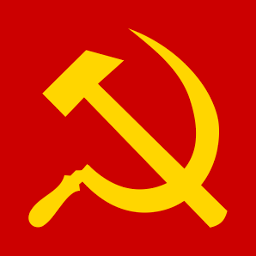If you don’t have health insurance in the US, Russia is better if you ever get sick. Not even an argument.
Kaplya [none/use name]
- 0 Posts
- 6 Comments

 20·8 months ago
20·8 months agoSpace warfare is much closer to naval warfare on Earth, so naval tactics and strategies are more transferable when applied to space. For example: taking weeks to maneuver, and firing at your opponent 100,000 of kms away.
Air sorties are typically completed within hours, because it is ultimately limited by the fuel they can carry.

 52·8 months ago
52·8 months agoAll I will say is this: most Westerner MLs I have seen (online) fall into the binary camps of “China is a capitalist hellhole” and “China is a socialist paradise that does nothing wrong”, and both trivialize the very real and complex challenges that we have to face.
It’s almost like you have one side that buys fully into Western propaganda and the other side over-corrects by going against everything Western propaganda is saying.
The fact is that China has had many great achievements and also made many critical mistakes (from the perspective of a communist), but most people aren’t interested in nuances and learning the complex history about China. They are more interested in vibes-based politics and things you can meme about.
Like, seriously, how many of you Westerners understand the economic history of China? What happened during the first 30 years under Mao? What changed under Deng? What happened in 1995? What happened during the first decade of the 21st century? What happened after the 2009 global financial crisis? What changed after Xi became president?
I can guarantee you that 95% of the Westerner leftists/MLs (and I’m being generous here) cannot adequately answer the questions above, when each phase marked a very distinct period of Chinese economic history in their attempt to navigate the changing global economic and geopolitical environments.

 174·9 months ago
174·9 months agoAll the money being lost for nothing
I can assure you that the money spent isn’t “lost” at all. They all ended up “somewhere”. There is a reason why Biden is so keen on pushing the $60 bil funding to Ukraine even though everyone knows there is no way Ukraine can win. But yes, agree with the rest of what you said.

 33·9 months ago
33·9 months agoI didn’t expect the state propaganda campaign to convince their people to accept welfare cuts and to embrace austerity to work this well.

You are mistaken, at least partially.
The unprecedented growth of the USSR economy occurred under Stalin’s Five Year Plans from 1929-55, at 13.8% (minus 1941-45 during the war, which registered a minus 3.7%) over a 20 year period.
The numbers were calculated using gross national income from the Soviet archive as GDP was not calculated (at least not in the same way) during the Soviet times. Check out the Russian economics book “Crystal Growth” for more details.
For comparison with the other periods in the USSR and Russia:
The growth during the Tsarist Russian empire were 2.8% (1885-1906) and 5.2% (1908-13) respectively.
The NEP period (1921-28) also registered a high growth of 12.7%, but it was largely due to the recovery from an extremely low base that followed directly from the Civil War, and began to peter out near the end of the NEP period. From 1921-26, growth was 14.8% but it fell to 6.7% in 1927-28. (Note: WWI and the Civil War from 1914-20 saw a decline of -11.7%)
Stalin’s Five Year Plans were the true sustained economic growth model, which registered at 14.5% (1929-40) and then immediately after the war at 13.0% (1946-55).
Unfortunately, Khrushchev screwed up and the growth of the rest for the Soviet periods were pitiful:
7.8% from 1956-65;
5.3% from 1966-85;
0.3% from 1986-91.
Post-USSR period under Yeltsin saw a rapid decline: -12.0% (1992-94) and then -2.9% (1995-98).
Putin’s recovery were modest at best: 6.9% (1999-2008) then 1.0% (2009-19).
Note that post-1991 figures were calculated using GDP instead of gross national income (GNI), but the differences never exceeded more than 3%, so the comparison is still largely valid.
For comparison with other countries over a 20-year period:
USSR - 13.8% (1929-55) over 22 years (minus 1941-45)
Taiwan - 11.5% (1947-73) over 27 years
China - 10.4% (1983-2007) over 25 years
South Korea - 10.2% (1966-88) over 23 years
Japan - 9.7% (1966-89) over 24 years
Note that the difference between the USSR and Taiwan/China/South Korea is vast when you take into account the compound growth over 20+ years.
Note also that South Korea copied the Soviet Five Year Plans, among other things, to initiate its rapid economic growth model during the 1960s.